20+ SAMPLE Internal Memo
-
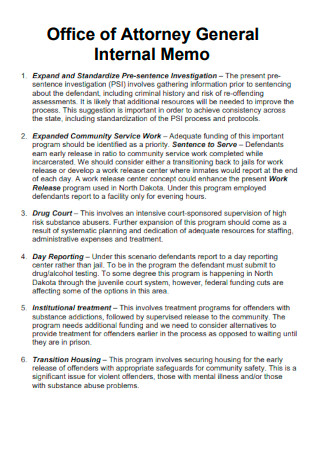
Office of Attorney General Internal Memo
download now -

Cooperative University Internal Memo
download now -
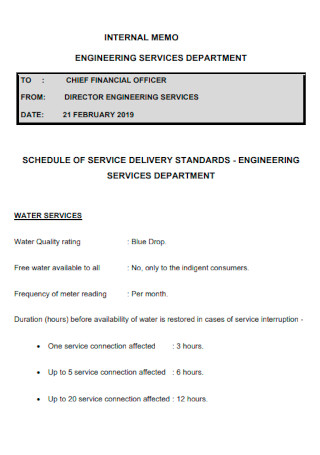
Internal Memo Engineering Services Department
download now -

Medical Research Institute Internal Memo
download now -

Internal Memo Preparing for a Potential Third Wave
download now -
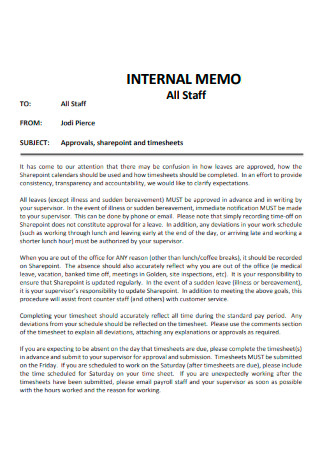
Internal Memo to Staff
download now -
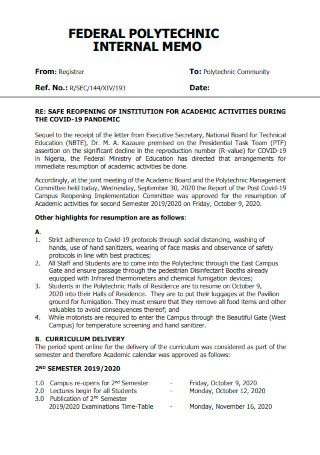
Federal Polytechnic Internal Memo
download now -
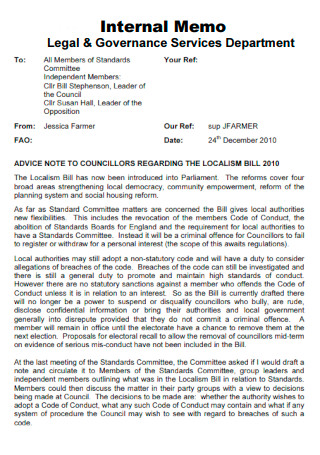
Internal Memo Legal & Governance Services Department
download now -

Internal Memo News to Report
download now -
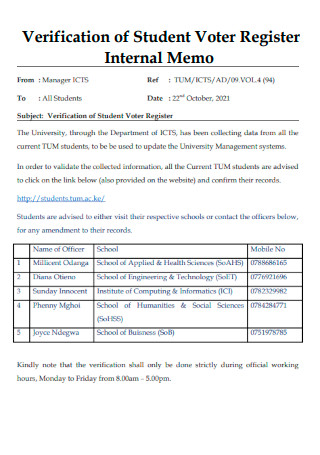
Verification of Student Voter Register Internal Memo
download now -
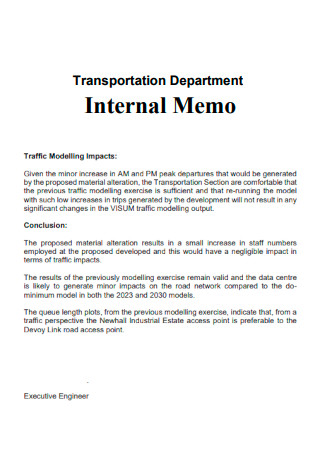
Transportation Department Internal Memo
download now -
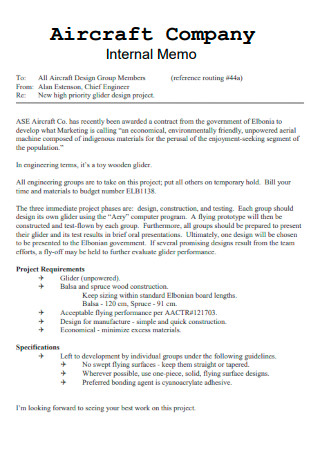
Aircraft Company Internal Memo
download now -
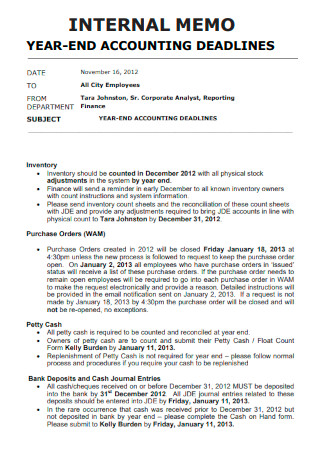
Year End Accounting Deadline Internal Memo
download now -
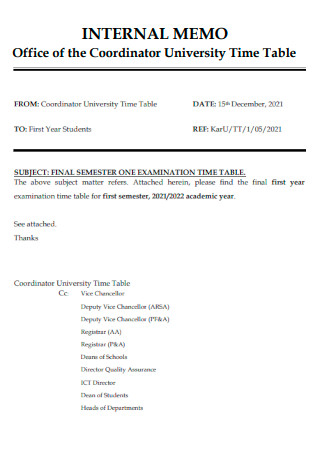
Office of the Coordinator University Time Table Internal Memo
download now -
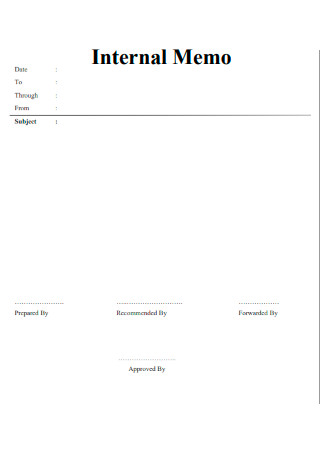
Sample Internal Memo
download now -
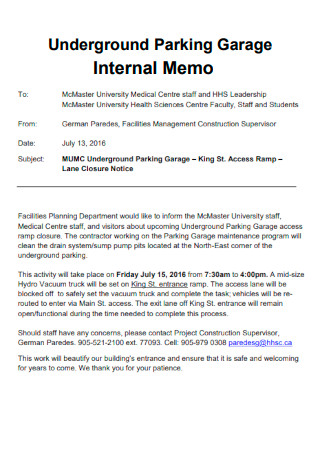
Underground Parking Garage Internal Memo
download now -
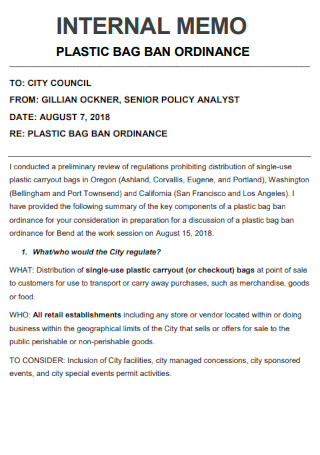
Plastic Bag Ban Ordinance Internal Memo
download now -
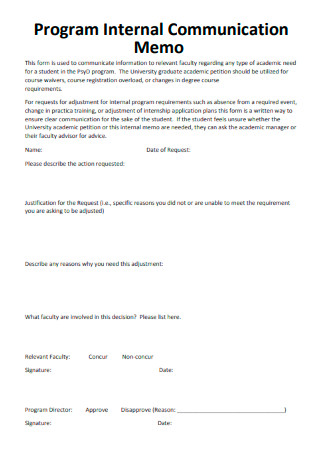
Program Internal Communication Memo
download now -
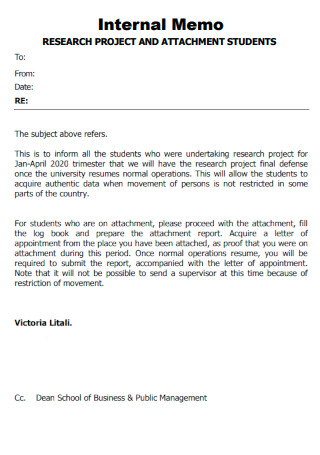
Research Project Attachment Student Internal Memo
download now -
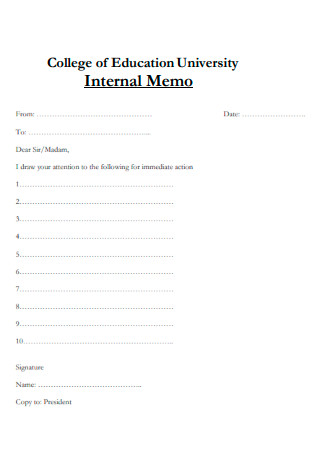
College of Education University Internal Memo
download now -
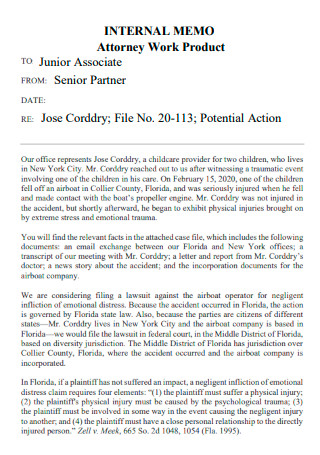
Internal Memo Attorney Work Product
download now
FREE Internal Memo s to Download
20+ SAMPLE Internal Memo
What Is an Internal Memo?
Different Internal Memo Formats
Benefits of Utilizing a Memo Within the Company
How to Write an Internal Memo
What is the difference between an internal memo from an external memo?
Why write an internal memo?
Are internal memos signed?
What Is an Internal Memo?
A memo is used for internal communications within an organization about procedures or official business. Internal memorandums inform your coworkers and managers about Projects, goals, deadlines, problems, and other issues. If you want your memo to be read, write as succinctly as possible and clearly identify the memo’s purpose. A brief check on how to do an internal memo format such as the contents of this article will assist you in ensuring that your memo is clear and concise. An internal memo concerning issues within the company is best addressed immediately than letting it sit.
Different Internal Memo Formats
Memos will differ slightly depending on the industry or situation. Some will need to be longer or shorter, while others may not have a timeline and some will have extensive background information. Your memo’s format should change to reflect the message you want your employees to understand. In setting up your internal memo design, it is best to comprehend the type of employees you have with you and how they react to things being sent to their emails.
Benefits of Utilizing a Memo Within the Company
The most common written tool for internal communication is the memo. The benefits of a memo are that it is brief and to the point. It is a timely achievement. They can be kept and provide a permanent record for references in the future involving similar situations. Managers rely heavily on memos because of the following significant benefits. Although different contents or announcements can also utilize other kinds of documents so knowing first and foremost what kind of content you are including within your document will help you to identify if the memo is the best option.
How to Write an Internal Memo
A memo, unlike an email, is a message sent to a large group of employees, such as your entire department or the entire company. You may need to write a memo to notify employees of upcoming events or to announce internal changes. Businesses can use memos to communicate newly updated Policy and procedure changes or to persuade employees to take action, such as attending an upcoming meeting, convention, or celebration of organizational milestones. As a starting point for creating your own business memos, this section will help you to know the internal memo details.
1. Create a Heading
The heading includes the date, the names of the recipients, your name, and a brief subject description. Put each of these items on their own line. “To:” comes before the list of recipients, “From:” comes before your name, “Date:” comes before the date, and “Subject:” comes before the subject description. The subject is the most important part of the heading. By reading the subject line, readers should quickly understand what information or guidelines are contained in the body of the memo. A good subject line summarizes the memo’s purpose in as few words as possible.
2. Include an Introduction
The introduction provides background information on the topic you will discuss in the body of the memo. While you may be familiar with the subject, your recipients may require additional information, especially if they are not directly involved with the project. In a two- or three-sentence paragraph, explain why the memo is being sent. The introduction’s purpose is to ensure that the recipients understand what will be addressed and why they have received the memo.
3. Write out the First Paragraph
For this section, you will need to directly state the purpose of your memo briefly. You could start your sentence with a phrase that can be used as a general greeting. Keep in mind that an internal memo should be straightforward, summed up, and to the point. You should deliver the most important information first, and then use the following paragraphs to go into greater detail.
4. Structure Second Paragraph
In the second paragraph, you should provide a frame of reference or supporting evidence. Assume your memo is informing the company about an internal reorganization. If this is the case, paragraph two should address the concern while also providing an explanation. Don’t just state the concern or issue in one sentence and leave it at that. This section should not confuse the readers so it is your task to clarify the central topic of the Interoffice Memo.
5. Add the Third Paragraph
You should include your specific request for each employee in the third paragraph. This is where you would state whether or not they can contact you to reserve a spot on the outing or offer the option of being sent an email for additional questions and clarifications. On the other hand, if you are informing employees about upcoming building construction, you might say that you appreciate their cooperation and patience until a specific section of the Company building is completed. It’s a good idea to include how you expect them to handle the news and whether you expect them to do anything in response to the memo.
6. Wrap It Up With a Conclusion
The conclusion describes the action you want recipients to take after reading the memo. You could solicit Feedback, make a decision, or invite recipients to a meeting to discuss the subject. The conclusion should include contact information for you. Include more than one method of contact, such as your phone extension number and email address. If there is a deadline for responding to the memo, this should be noted as well.
What is the difference between an internal memo from an external memo?
Internal corporate memos are different from external memos in that they address communication within the same company. External memos are used to communicate business to a different company, usually by means other than postal mail, and to a company that is involved in certain business functions. However, regardless of the recipient, keep in mind that memos do not require a salutation because the heading includes a “To:” field. Body paragraphs of memos should not be indented. Do not use a complimentary close at the end of the memo. The originator of the memo is already indicated in the heading.
Why write an internal memo?
An internal memo is a quick and efficient way to reach out to a large number of people within a company. You can easily clarify or analyze a subject, make recommendations, calendar events, give direction, transmit materials, make announcements, issue reports, solicit contributions, and request approvals using a memo. The key to writing an effective internal memo is to keep it simple. Your message should be brief and delivered in a straightforward manner that conveys the message clearly. An internal memorandum sample of the results of a company-wide survey of cafeteria lunches and the new, improved Menu could be sent.
Are internal memos signed?
Memos, on the other hand, are internal documents that are typically only seen by employees of a company. Memos are not the same as business letters, which clearly require a signature. Many young managers just starting out in the business world are unsure whether to sign them. Memos, in practice, do not include a signature. However, managers should sometimes include their initials next to their names in the header. The real challenge is determining whether and when to do so.
When it comes to preparing an internal memo, you might think it won’t take as much time as necessary to prepare other formal documents. But you should still be careful in writing up the contents to ensure that you don’t accidentally formulate a confusing statement especially if you are in a rush to send it out to your employees or fellow coworkers. With that being said, the example of a written internal memo is presented within this article for additional reference that you can use and view.
